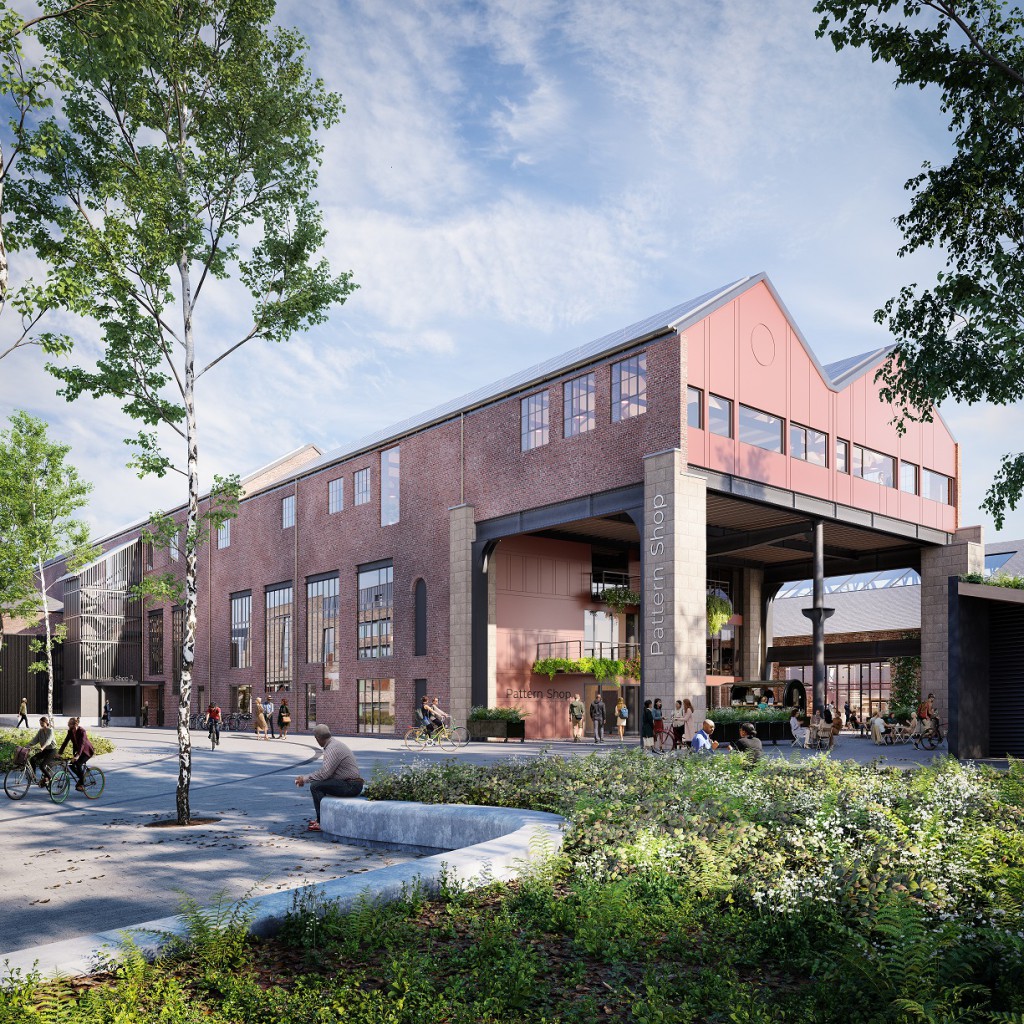A future steeped in heritage

Pippa Heron, Development Manager at igloo Regeneration, and Alec Hamlin Development Director at igloo and Blueprint Regeneration, explore the potential for historical renovation in property development.
In the face of economic and environmental adversity, the advantage of a restoration- focused strategy cannot be overstated. With the opportunity to reignite character and heritage in our urban landscapes, retrofitting also offers a myriad of sustainability benefits. With oversight of the development schemes across the igloo and Blueprint portfolios, this article will explore strategies to overcoming key retrofitting challenges and share how the older buildings across our city landscape could hold the solution to a more sustainable and economical future.
Uniting cultural heritage and community identity
A successful retrofitting scheme expands beyond the maintenance of architectural form. At igloo, we view an area’s heritage as a placemaking asset and commit to reinforcing the community’s identity. Many disused buildings are a reminder of our industrial history, showcasing the architectural innovations of those periods. Through their restoration, developers can leverage a building’s importance to create a statement landmark that builds pride within a community. Newcastle’s Pattern Shop is an exemplary case study for this approach. Originally used in the 1880s by world famous locomotive designer Robert Stephenson, the Victorian warehouse had been abandoned. Revitalised by Newcastle City Council and igloo Regeneration, the building now offers sustainable office space for today’s innovators.
In terms of sustainability, Historic England reports that repurposing buildings can save between 50% to 75% of the embodied carbon that would be emitted by new constructions – and since most materials are already in place, restorations consume less carbon, in comparison to building new. What’s more, keeping these buildings instead of replacing them helps prevent the dispersal of embodied carbon emitted during original construction.
The Mundella building in Nottingham is another great example of sustainable restoration. The former school that stood empty for decades was repurposed by Blueprint Regeneration into residential space, adapting the space to modern day living standards. However, the project’s notability lies within how the developers were able to preserve the building’s existing framework. By reducing the number of openings that were required, less structural materials were needed, while staircases were preserved, and the primary roof structure was left intact. Going beyond preservation, the scheme also doubled down on recycling efforts, with old doors remodeled into furniture pieces for the building’s show home, and other unused materials that could not be reused in the refurbishment were either claimed by architectural salvage operations or recycled, ensuring no construction waste was sent to landfill. The scheme demonstrates how a true commitment to sustainability can make it possible to transform older buildings with minimal new material requirements, aligning with current environmental goals to reduce embodied carbon.
In addition, restoring historic buildings can stimulate local economies through tourism and the utilisation of local crafts and trades. Since major restoration projects will often require experts with specialised skills in traditional construction techniques, there’s an argument for how schemes preserve and promote heritage crafts. Moreover, revitalised buildings – like The Pattern Shop – can take on the role of a hub for new businesses, offering unique commercial spaces that elevates economic diversity and vitality.
The complexities of restoration
Although restoration schemes offer an array of benefits, developers are often discouraged by the complex challenges they present. In the UK, restoring historic structures involves compliance with an array of conservation standards that honor and protect a building’s historical integrity. Additionally, a historical building’s layout and structural features can conflict with today’s accessibility standards, often requiring innovative solutions to balance historical preservation with modern needs. Developers also face the challenge and cost of sourcing authentic materials that blend with the historical period of buildings. This requires deep research and collaboration with skilled specialists in traditional construction methods, who are in low supply, which can cause delays and increased costs.
An ongoing, strategic partnership with local authorities, communities and conservation experts is a necessity to help developers navigate these extensive challenges. Through collaboration, the real estate sector can leverage expert insight and innovation to create practical solutions that respect heritage and modern usability.
A surge in collaborative partnerships
While public and private sector partnerships are pivotal to securing sufficient funding, the sector needs to shift away from transactional attitudes to form strong relationships that allow local authorities and developers to share the skills, networks and risks, while constantly communicating to allow for flexible project delivery. These collaborative efforts are crucial for preserving culturally significant structures for future generations. Going beyond local authorities, consultation with local communities can further strengthen public support and elevate the impact of initiatives by creating a sense of shared responsibility.
Shifting attitudes to a sustainable future
When looking to restore historic buildings, the industry needs to look beyond construction and focus efforts on preserving the culture and identities deep rooted within communities. With an array of obstacles in the path of successful restoration, collaborative efforts are needed to ensure that our industrial heritage is preserved for the appreciation of future generations. Historical renovation is a strategic, sustainable choice for development that can unite heritage with modern functionality – with the success of projects like The Pattern Shop and Mundella offering a blueprint to transforming the urban landscape. Ultimately, for retrofitting to gain the funding and collaboration it needs to be successful, the industry needs to be looking at it as a sustainable, economic step forward in real estate, not just a solution to pay tribute to our past.







